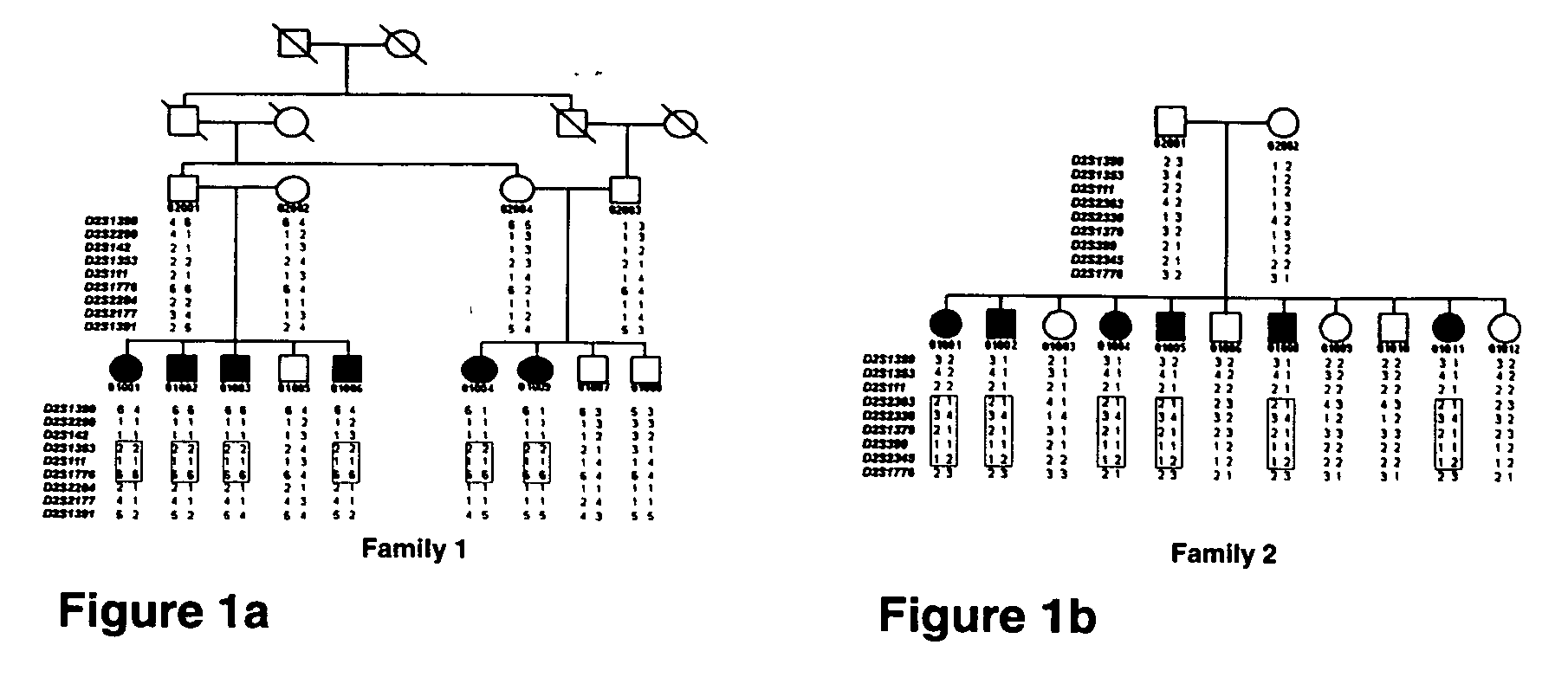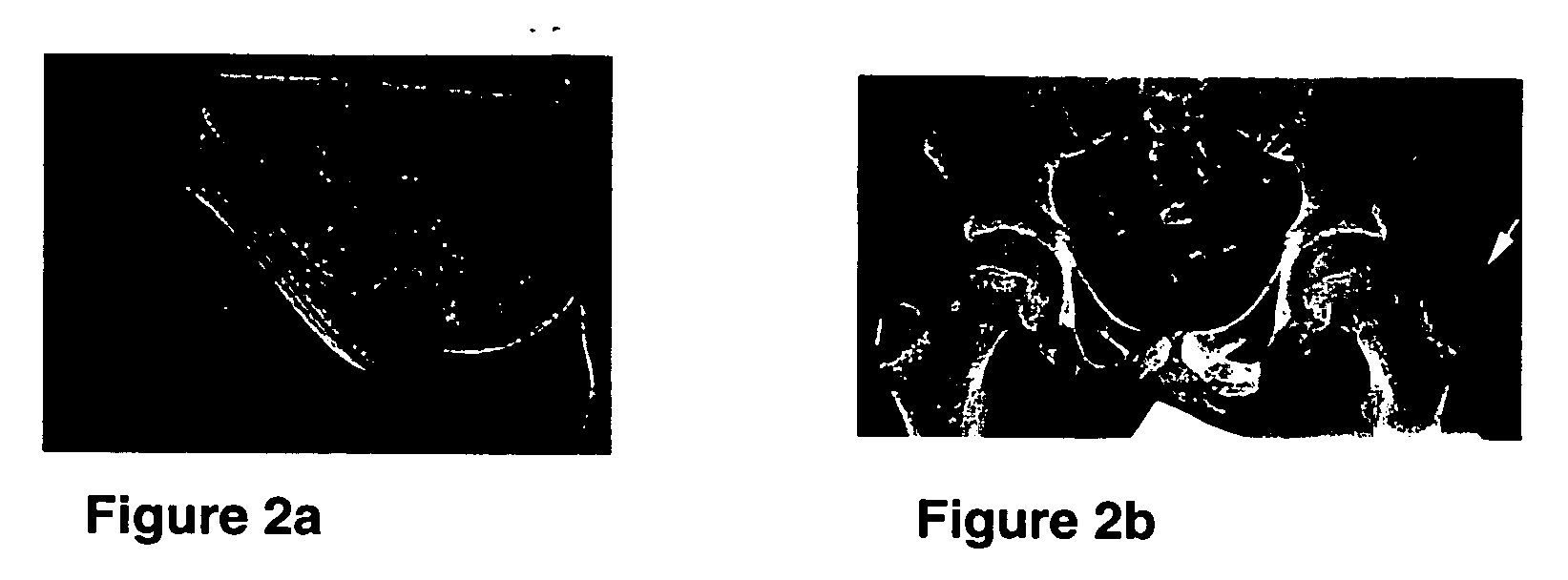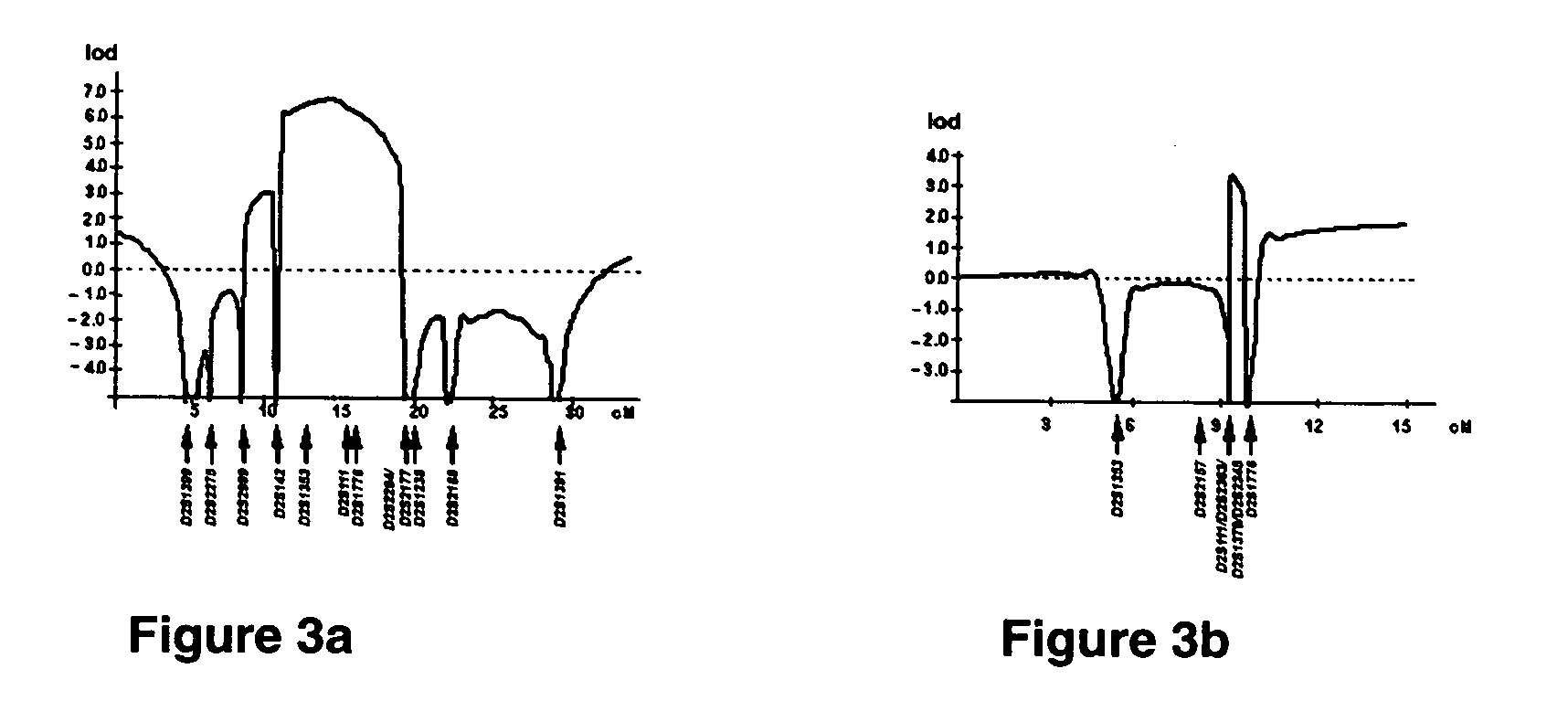Compositions and methods for treating disorders associated with abnormal phosphate metabolism
a phosphate metabolism and phosphate technology, applied in the direction of instruments, biocide, peptide/protein ingredients, etc., can solve the problems of increasing posub>4 /sub>excretion, supplementation often fails to normalize serum phosphate level, and sodium-dependent phosphate transport in renal proximal tubules
- Summary
- Abstract
- Description
- Claims
- Application Information
AI Technical Summary
Benefits of technology
Problems solved by technology
Method used
Image
Examples
example 1
Characterization of a Familial Tumoral Calcinosis (FTC) Critical Region
[0248] Familial tumoral calcinosis (FTC; MIM211900) is a severe autosomal recessive metabolic disorder manifesting with hyperphosphatemia and massive calcium deposits in the skin and subcutaneous tissues. To identify the genetic basis of FTC, linkage analysis was performed using DNA from informative FTC families, as follows.
[0249] Materials and Experimental Methods
[0250] FTC affected individuals—A total of 12 FTC affected individuals belonging to two large kindred of Druze and African American origin (FIGS. 1a-b), which have been extensively described in the literature (Steinherz, R. et al. 1985, Am. J. Dis. Child. 139: 816-819; Slavin, R. E., et al., 1993, Am. J. Surg. Path. 17: 788-802) were included in the study.
[0251] Linkage analysis—A genome wide scan using 362 microsatellite markers (InVitrogen, Cat. No. 20508, Huntsville, Ala., USA) was employed in a consanguinity FTC family (family 1, FIG. 1a).
[0252...
example 2
Biallelic Deleterious Mutations in GALNT3, Encoding a Protein Involved in O-Linked Glycosylation, Cause Familial Tumoral Calcinosis
[0258] To test whether mutations in the GALNT3 gene underlie the molecular basis of FTC, genomic DNA from FTC cases was subjected to sequence analysis of the GALNT3 coding sequence.
[0259] Materials and Experimental Methods
[0260] Sequencing analysis—Genomic DNA was amplified using PCR primers designed specific for the amplification of the GALNT3 coding exons. PCR primers and conditions are listed in Table 2, hereinbelow.
TABLE 2PCR primers and conditionsAnneal.Temp.Primer (SEQ ID NO:)Sequence 5′→3′(° C.)GALe1bR (SEQ ID NO:1)GCTCACCCCTCTCTCCCCTG60° C.GALe1bF (SEQ ID NO:2)CATTGATGCTGGTGAGAGGALe1aR (SEQ ID NO:3)CTGAGGTGGACGGTCAAGGACAG60° C.GALe1Af (SEQ ID NO:4)GTAGGACTGAATAGCTACTAATACGALe2R (SEQ ID NO:5)CTGAGATGGCATACAGAGAGTAC60° C.GALe2F (SEQ ID NO:6)CTCTGGGTGAGTGATTTGCTTGGALe3R (SEQ ID NO:7)CACAGAGCTGTTACCTGCTTGG60° C.GALe3F (SEQ ID NO:8)GCTCTGTGGTTTCA...
PUM
| Property | Measurement | Unit |
|---|---|---|
| thickness | aaaaa | aaaaa |
| size | aaaaa | aaaaa |
| pore size | aaaaa | aaaaa |
Abstract
Description
Claims
Application Information
 Login to View More
Login to View More - R&D
- Intellectual Property
- Life Sciences
- Materials
- Tech Scout
- Unparalleled Data Quality
- Higher Quality Content
- 60% Fewer Hallucinations
Browse by: Latest US Patents, China's latest patents, Technical Efficacy Thesaurus, Application Domain, Technology Topic, Popular Technical Reports.
© 2025 PatSnap. All rights reserved.Legal|Privacy policy|Modern Slavery Act Transparency Statement|Sitemap|About US| Contact US: help@patsnap.com



